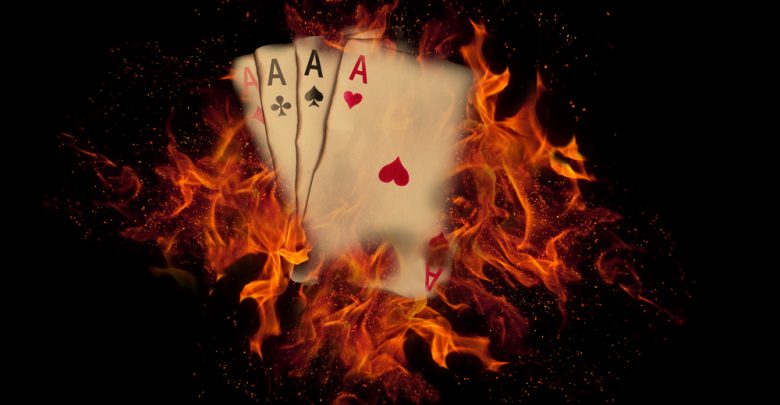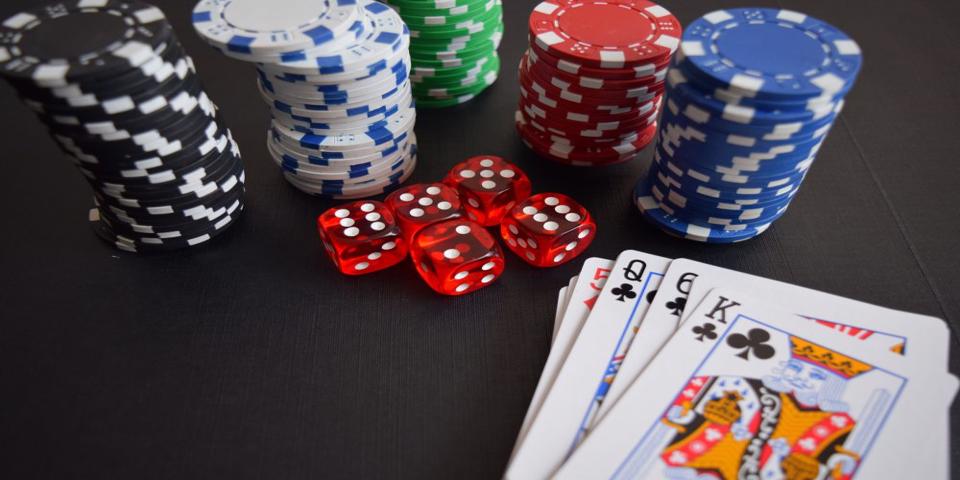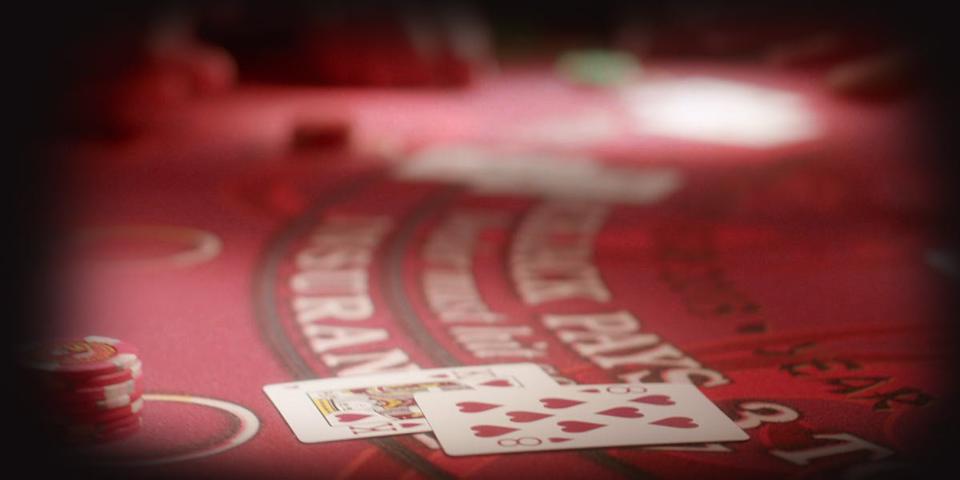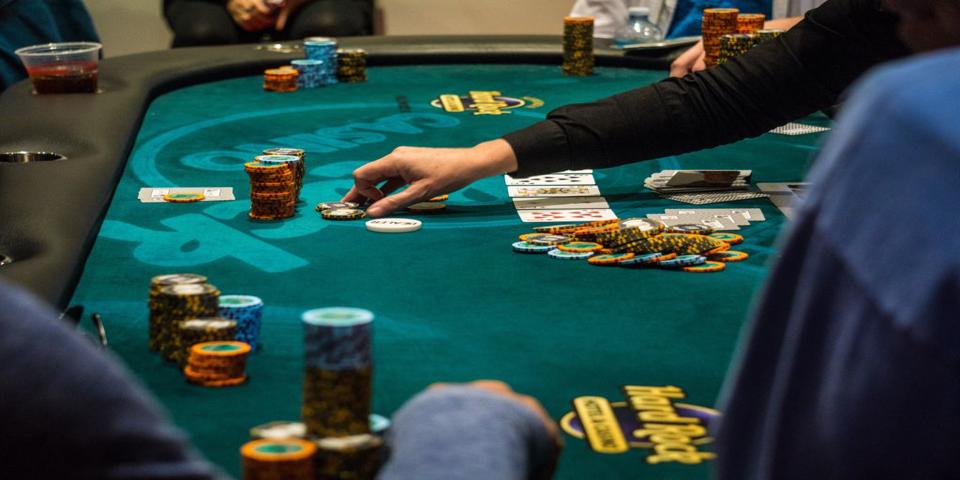The Ultimate 4 Card Poker Guide: Tips and Tricks

Take a look around the poker-themed table games in any casino and it won’t be long before the game of 4 Card Poker draws you in.
The game itself is very simple and, unlike the traditional game of poker, is played against the dealer rather than other players, so there’s no worrying about who you’re up against. You won’t have to wear a cap and sunglasses (or a balaclava, depending on how bad your poker face is). you just need to know the numbers surrounding the game.
It’s for this reason, the simplicity of the game, that 4 Card Poker has proved so popular over the years, ever since its creation by ShuffleMaster legend Roger Snow. There’s not a lot that players can do wrong and there are no difficult-to-understand rules. You have just three simple options for every hand.
Bet 1x, bet 3x, or fold – it’s that easy. Of course, there’s a little more to it than that with a secondary “Aces Up” bet and a little strategy to go along with it.
But in a nutshell, you can’t find a table game much simpler than 4 Card Poker.
Quick history
Developed by none other than Roger Snow of ShuffleMaster – the father of plenty of poker games through the years – 4 Card Poker (similar to 3 Card Poker) was a hit with players right from the start.
There’s a common misconception about the game thanks to its name, “4 Card Poker.” In reality, the player is dealt 5 cards and the dealer will find themselves with 6 on each hand. The dealer may get an extra card, but that doesn’t mean the game is unfair and, unlike other similar poker games, the dealer will always qualify.
Although the game was created and owned by ShuffleMaster, the company (rebranded to SHFL Entertainment) was acquired by Bally Technologies in 2013 for approximately $1.3 billion. Turns out there’s some serious money in poker – who knew?
How to play 4 Card Poker

Like most poker-derived games, 4 Card Poker begins with an ante bet in which each player chooses a number of poker chips to wager. In 4 Card Poker, there are two different betting options (more on that later).
The cards are then dealt, and the player receives 5 face-up cards whereas the dealer receives 5 face-down cards with an additional face-up card, totaling 6. It’s this 6th card that gives the dealer the edge, allowing for an extra option to create a strong hand.
The 6th card is dealt face-up to hint what hands could be present (with a 52 card deck), but figuring it out can be very tricky with 5 other facedown cards.
Ante Play
The aim of the game is for the player to create the best hand possible using only 4 of the dealt cards in their hand and beat the dealer.
If a player beats the dealer by creating a higher ranking hand, they are paid the amount bet in a 1 to 1 payout. However, a bonus is paid for the hands of a three-of-a-kind or better. This is paid regardless of a win or loss against the dealer, although the ante bet will be lost in the latter scenario.
A table showing the 4 Card Poker rank of hands can be seen below:
| Hand | Description | Bonus Payment |
| Four of a kind | Four cards of the same rank | 25-1 |
| Straight flush | Four cards of the same suit in sequence | 20-1 |
| Three of a kind | Three cards of the same rank | 2-1 |
| Flush | Four cards of the same suit | – |
| Straight | Four cards in sequence | – |
| Two Pair | Two cards of equal value and two other cards of equal value | – |
| Pair | Two cards of equal value | – |
| High card | The highest card in the hand | – |
Table: 4 card poker rank of hands and associated bonus payment for the ante bet
The Aces Up bet
4 Card Poker is essentially two games for the price of one, with a secondary “Aces Up” bet permitted alongside the standard dealer versus game.
This means that players are paid depending on their hand and their hand alone, regardless of whether or not they are beaten by the dealer. If this does occur, players will lose their ante bet but will receive a payout from the Aces Up bet.
A table showing the 4 Card Poker Aces Up paytables can be seen below:
| Hand | Paytable 1 | Paytable 2 | Paytable 3 |
| 4 of a kind | 50 to 1 | 50 to 1 | 50 to 1 |
| Straight Flush | 40 to 1 | 40 to 1 | 30 to 1 |
| 3 of a kind | 9 to 1 | 7 to 1 | 7 to 1 |
| Flush | 6 to 1 | 6 to 1 | 6 to 1 |
| Straight | 4 to 1 | 5 to 1 | 5 to 1 |
| 2 Pairs | 2 to 1 | 2 to 1 | 2 to 1 |
| Pair of Aces | 1 to 1 | 1 to 1 | 1 to 1 |
Table: A variety of Aces Up paytables for 4 card poker
It doesn’t take a genius to work out that there’s no chance for a player to claim the Royal Flush because with only 4 cards in the running, there just isn’t enough meat on the bone.
It’s important to remember that players taking advantage of the Aces Up wager have to consider the larger impact on their bankroll. The two bets are taken separately, so it’s definitely something to consider before taking a seat, especially if you’re playing strip poker!
Dealer qualifying
Unlike some poker-based table games, the dealer will always qualify in 4 card poker, regardless of what they turn over in the showdown.
That’s good news for players, giving more chances to win big when the dealer strikes out. It’s just that the sixth card can be a menace.
4 card poker rules

Looking for a clear set of rules (or a cheat sheet) to rely on? There’s just 14 that you need to gain a full understanding of the game:
- Four card poker is played with a standard 52-card deck.
- Two betting options are originally available: The “Ante” and the “Aces Up”.
- Players are to receive 5 cards each (face-up) while the dealer receives six cards. One of the dealer cards is placed face-up, and the remaining five left face-down.
- Players making the Ante bet are given the decision to fold or raise (1x or 3x).
- If the player opts to fold, the Ante bet is forfeited. Depending on casino rules, the Aces Up bet may or may not be forfeited. However, a fold does not make sense in this situation.
- If a player chooses to raise, they must raise the minimum amount of 1x the Ante and a maximum of 3x the Ante.
- Once the five cards have been dealt to the player, the four best cards are held and the fifth is discarded.
- The ranking of hands can be seen in the following (from lowest to highest): high card, pair, two pair, straight, flush, three of a kind, straight flush, four of a kind.
- Following the completion of all decisions, the dealer will finally reveal their remaining cards, selecting the top four from the six.
- The player’s and dealer’s hands are then compared with the higher ranking hand winning.
- If the dealer has the highest-ranking of the two hands, then the player loses both the Ante and the Raise.
- If the player’s hand is the highest-ranking or equal to the dealer’s hand, then the Ante and Raise will pay one to one.
- If the player has three of a kind or better, then they qualify for a paid Bonus, regardless of the dealer’s hand.
- If a player takes advantage of the “Aces Up” bet at the start of the round, they receive a payout for any hand consisting of a pair of aces or better.
4 card poker strategy
By looking at the numbers surrounding a typical 4 Card Poker return table, we can start to develop a number of strategies to minimize the losses and maximize the wins when playing the game.
| Player Hand | Raise/Fold | Win/Loss | Probability | Pays | Return |
| Four of a Kind | 3 | Win | 0.000240 | +29 | 0.006960 |
| Four of a Kind | 3 | Lose | 0.000000 | +21 | 0.000002 |
| Straight Flush | 3 | Win | 0.000796 | +24 | 0.019096 |
| Straight Flush | 3 | Lose | 0.000002 | +16 | 0.000025 |
| Three of a Kind | 3 | Win | 0.021951 | +6 | 0.131703 |
| Three of a Kind | 3 | Lose | 0.000618 | -2 | -0.001237 |
| Flush | 3 | Win | 0.039415 | +4 | 0.157660 |
| Flush | 3 | Lose | 0.004686 | -4 | -0.018743 |
| Straight | 3 | Win | 0.031399 | +4 | 0.125597 |
| Straight | 3 | Lose | 0.007773 | -4 | -0.031093 |
| Two Pair | 3 | Win | 0.033083 | +4 | 0.132333 |
| Two Pair | 3 | Lose | 0.014456 | -4 | -0.057823 |
| One Pair | 3 | Win | 0.088179 | +4 | 0.352714 |
| One Pair | 3 | Lose | 0.064539 | -4 | -0.258155 |
| One Pair | 1 | Win | 0.080835 | +2 | 0.161671 |
| One Pair | 1 | Lose | 0.136691 | -2 | -0.273382 |
| One Pair | Fold | Fold | 0.032822 | -1 | -0.032822 |
| High Card | 1 | Win | 0.000884 | +2 | 0.001769 |
| High Card | 1 | Lose | 0.002523 | -2 | -0.005047 |
| High Card | Fold | Fold | 0.439108 | -1 | -0.439108 |
| Totals | 1.000000 | -0.027879 |
Table: A return table based on optimal player strategy
We’ll start looking into the strategies of play for 4 Card Poker by looking at three different levels in beginner, intermediate, and advanced, similar to when playing video poker.
Beginner Strategy

First proposed by Stanley Ko, the most used and easiest to follow strategy comes with just three rules to keep in mind while playing.
Players should keep focused on the game and look to ensure the following:
- Players raise 3X with a pair of tens or higher
- Players raise 1X with a pair of twos to a pair of nines.
- Players fold if they do not receive at least a pair.
Although the exact house edge is difficult to calculate, in the second edition of “Beyond Counting” by James Grosjean, this strategy was quoted to generate a house edge of 3.396%.
It might not be perfect, but that’s more than good enough for such a simple strategy!
Intermediate Strategy
In the interest of balancing both power and simplicity, a well-respected strategist (whom some would call the Wizard of Odds) derived the following 4 Card Poker strategy.
Players should look to complete the following:
- Pair of Aces or better: Bet 3x
- Pair of Js, Qs, Ks: Bet 3x if the dealer’s face-up card is lower than or matches a rank in your hand; otherwise bet 1x
- Pair of 9s, 10s: Bet 1x if the dealer’s face-up card outranks your pair; otherwise bet 3x
- Pair of 8s: Bet 3x if the dealer’s face-up card is a 2; otherwise bet 1x
- Pair of 3s to 7s: Bet 1x
- Pair of 2s or AKQ: Bet 1x if the dealer’s face-up card matches a rank in your hand; otherwise fold
- All other: Fold
According to the previously quoted Ante Bonus paytable, the house edge for this intermediate strategy is quoted at 2.86%. It may be a little more confusing, but it’s hard to complain when the returns are coming in.
Advanced Strategy

Finally, we have an advanced strategy, another 4 Card Poker strategy created by The Wizard of Odds, that helps when playing the game.
Players should look to complete the following:
- Pair of Aces or better: Bet 3x.
- Pair of Ks: Bet 3x; if against an Ace when one is not in the player’s hand, bet 1x.
- Pair of Js or Qs: Bet 3x; if dealer’s card outranks your pairs rank and does not match a single card in the player’s hand, bet 1x.
- Pair of 9s or 10s: Bet 3x; if dealer’s card outranks your pairs rank, bet 1x.
- Pair of 8s: Bet 1x; if against a 2, bet 3x.
- Pair of 4s to 7s: Bet 1x.
- Pair of 3s: Bet 1x; if against a Jack when the player’s highest kicker is a maximum of 10, fold.
- Pair of 2s or AKQ: Fold; if dealer’s card matches a rank in your hand, bet 1x.
- AKJT: Fold,; if against a Jack, bet 1x.
- AKJ9 or lower: Fold.
The advanced strategy doesn’t come out a whole lot better than the intermediate, having a house edge of around the 2.85 mark. But it does offer a slight improvement. If you don’t want to overcomplicate the game, however, it’s best to go for the intermediate option.
The house edge
If we pay attention to the lower right-hand corner of the returns table, players will see the documented house edge of approximately 2.8%, the way in which casinos make their money.
The 2.8% comes entirely from the 6th card, because the dealer qualifies regardless of the hand that they’re able to build. When comparing the house edge to some other popular table games (Caribbean Stud Poker comes in with a house edge of 5.2%), players will find it’s nothing worth turning their nose up at.
The takeaway

We’ve lightly touched on the history of the game with its ShuffleMaster routes, went through the rules, and even covered a standard return table – but now it’s your turn to put the information into practice.
By using any of the three documented strategies, that you’ll find below, you’ll be able to minimize your losses and maximize your earnings as you play through 4 Card Poker. With each hand, you’ll start to catch on and understand the mathematics and statistics behind the decision (if you want to anyway).
Beginner Strategy
- Players raise 3X with a pair of tens or higher
- Players raise 1X with a pair of twos to a pair of nines.
- Payers fold if they do not receive at least a pair.
Intermediate Strategy
- Pair of Aces or better: Bet 3x
- Pair of Js, Qs, Ks: Bet 3x if the dealer’s face-up card is lower than or matches a rank in your hand; otherwise bet 1x
- Pair of 9s, 10s: Bet 1x if the dealer’s face-up card outranks your pair; otherwise bet 3x
- Pair of 8s: Bet 3x if the dealer’s face-up card is a 2; otherwise bet 1x
- Pair of 3s to 7s: Bet 1x
- Pair of 2s or AKQ: Bet 1x if the dealer’s face-up card matches a rank in your hand; otherwise fold
- All other: Fold
Advanced Strategy
- Pair of Aces or better: Bet 3x.
- Pair of Ks: Bet 3x; if against an Ace when one is not in the player’s hand, bet 1x.
- Pair of Js or Qs: Bet 3x; if dealer’s card outranks your pairs rank and does not match a single card in the player’s hand, bet 1x.
- Pair of 9s or 10s: Bet 3x; if dealer’s card outranks your pairs rank, bet 1x.
- Pair of 8s: Bet 1x; if against a 2, bet 3x.
- Pair of 4s to 7s: Bet 1x.
- Pair of 3s: Bet 1x; if against a Jack when the player’s highest kicker is a maximum of 10, fold.
- Pair of 2s or AKQ: Fold; if dealer’s card matches a rank in your hand, bet 1x.
- AKJT: Fold,; if against a Jack, bet 1x.
- AKJ9 or lower: Fold.
Whichever strategy you choose, whether it’s one of the three above or whether you choose to go with your gut, you’re sure to fall in love with 4 card poker.
It’s a true ShuffleMaster-piece.






